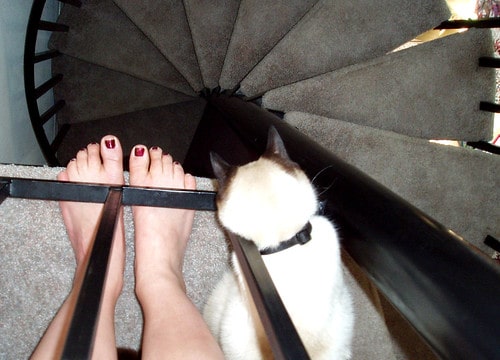Home Safe Home? 27 Safety Precautions Under $40
Dorothy was right: There is no place like home. Home is where we feel safe and relaxed in the familiarity of our surroundings — the sheets are just right, our favorite chair welcomes us, and we know, half-asleep and at 1 a.m., that we can get to the bathroom in exactly 10 steps.
But it turns out we might not be as safe as we think. According to the Home Safety Council (HSC), home-related injuries cause nearly 20,000 deaths and 21 million medical visits each year. HSC’s State of Home Safety in America report found that unintentional home injuries cost an average of at least $222 billion each year in medical costs between 1997 and 2001, far greater than costs from other home injuries such as violence ($98 billion) or suicidal acts ($96 billion).
Yet most of us, myself included, fail to take these numbers seriously. HSC polled Americans on the injury prevention actions they took in their homes and found that an alarming number failed to appreciate the risk and lacked either the motivation or knowledge to reduce it.
The good news is that most home injuries are avoidable with a few simple modifications, ranging in price from free to $40. Learn how easy and inexpensive it is to protect your family from the five leading causes of injury, as reported by the HSC.
Falls
Each year 5.1 million Americans are injured by falls that occur in and around the home. Falls are the leading cause of home injuries and account for one-third of unintentional home injury deaths.
Recommended actions:
- Put a nonslip mat or safety treads on the tub floor and use grab bars when you get out of the shower: $4-$10.
- Turn on area lights when using stairs, steps, and landings: $0.
- Use handrails on both sides of stairs and steps, and shoo pets away from your path (I know, easier said than done): $0.
- Use a proper ladder for climbing instead of a stool or furniture: $0-$30.
Poisonings
The second leading cause of home injuries, more than 2 million poisonings are reported to the Poison Control Center each year, yet only 1% of respondents in the HSC survey considered it a top concern.
Recommended actions:
- Lock poisons, cleaners, medications, and other dangerous substances away from a child’s reach: $0.
- Keep all cleaners in their original containers, and do not mix them. Even better? Buy non-toxic all-purpose cleaners from brands like Method or Seventh Generation, or make your own: $2-$6 for 32 ounces of self-made or purchased cleaner solution.
- Use medications carefully, following the directions. Use child-resistant bottles, but don’t rely on them: $0.
- Install carbon monoxide detectors in bedrooms: $20-$30 per detector.*
- If someone is unconscious, is having trouble breathing, or is having seizures, call 911, but if someone seems okay and you think they may have ingested poison or you have a question, call the National Poison Control Hotline. Put the number in your phone’s address book or near the home phone (only one-fifth of polled Americans reported doing so) — it’s 1-800-222-1222: $0.
- Radon is a cancer-causing, radioactive gas that you can’t see, smell, or taste. The Surgeon General has warned that radon is the second only to smoking as the leading cause of lung cancer in the United States. Test your home at least every two years or when living patterns change: $15 (or free — some state programs offer low-cost or free kits, contact your state radon contact for more information).
Fires and burns
Of all fire- and burn-related injuries, 90% occur in the home. We know we should have a fire extinguisher and smoke detectors in the home (93% of the people polled did have smoke detectors installed), but most of us slack off on other precautions such as fire escape ladders (only 6% reported having one) and a family escape plan (just 26% had one).
Recommended actions:
- Have working smoke alarms: about $3 to replace batteries, $20 per smoke detector.*
- Create a family fire escape plan: $0.
- Two story home? Keep a fire escape ladder near each upstairs bedroom window: $35+ per ladder.
- Don’t leave the stove when cooking, especially when frying food, and consider keeping an easy-to-use fire extinguisher near the range: $0-$12.
- Space heaters should be three or more feet away from anything flammable and turned off when you leave the room or go to sleep: $0.
- If you smoke, smoke outside and put water in ashtrays before emptying. Lock matches and lighters away from a child’s reach: $0.
- Blow out candles before leaving the room or going to sleep, or replace real candles with flameless ones — new battery-operated candles are made with scented wax and create a flickering glow: $0, or $10 for a 6-inch flameless candle.
- Set the hot water heater at or below 120 degrees Fahrenheit to prevent burns, and test bathwater temperature before children climb in: $0.
Choking and suffocation
The easiest way to prevent most choking-related deaths? Sit, and require children to sit, while eating. Only 39% of adults require children to do so.
Recommended actions:
- If an item can fit through a toilet paper tube, it can cause a young child to choke. Keep small items out of children’s reach: $0.
- Don’t put pillows, comforters, or toys in a child’s crib: $0.
- Tie or clip the loops in window cords up high where children can’t reach them: $0.
- Read the labels on all toys, especially the recommended age: $0.
- Cut food into small bites for kids, and both kids and adults should sit down when they eat and chew slowly: $0.
Drowning
Most drowning deaths at home are related to swimming pools and spa tubs, but there are easy ways to keep everyone safe this summer.
Recommended actions:
- Sounds obvious, but stay within arm’s reach of children in and around water. This includes bathtubs, toilets, pools, and spas (more than half of the HSC survey respondents failed to do so): $0.
- Keep the gate around your pool closed and locked: $0.
- Empty large buckets and wading pools after use and store upside-down: $0.
- To avoid suction entrapment, don’t use a pool or spa if there are broken or missing drain covers: $0, or $15+ for a drain cover replacement.
- Research the safest pool cover for your type of pool: price varies.
*Rather than buying separate carbon monoxide detectors and smoke alarms, install a single unit that does both: $40-$50.
Is your safety to-do list as long as mine? Know any easy fixes that make your home a safer place for your family? I’m embarrassed to say that buying carbon monoxide detectors and testing for radon are two things I have always meant to do, but never got around to doing them. June is Home Safety Month, though, so it’s the perfect time to check it off my list!
Become A Money Boss And Join 15,000 Others
Subscribe to the GRS Insider (FREE) and we’ll give you a copy of the Money Boss Manifesto (also FREE)


